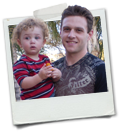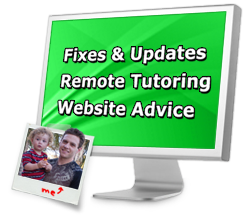Nothing is more frustrating than finding that your WordPress website is broken. Perhaps the pages aren’t showing up correctly in the browser, maybe you have PHP errors atop your pages, or something else has gone haywire. What do you do?
Troubleshooting a Broken WordPress Website
I get website help calls all the time from people whose WordPress websites have broken, and I always start the conversation with the same basic set of questions to help us figure out what happened to the WordPress website and determine a plan for fixing it.
First Question: What Changed?
Websites don’t break for no reason. When a website suddenly shows a PHP error that wasn’t there before, or a slider suddenly stops working, something typically has changed to cause the problem. The first question I ask my clients is this: between the time when your WordPress website was broken and now, what changed?
Changes that can break your WordPress website
Someone changed something in the code/pages
The most common reason for a WordPress website to break is a rather simple one: someone changed something. A person who works on the site tried to update a page or change the WordPress menu and suddenly there’s an error.
If someone changed something around the time the error started occurring, there’s a good chance that’s your root cause. If a page, setting, or piece of code has changed, the first thing to do is identify specifically what steps they took to make the change, so that it can be undone and/or re-done properly.
The host has upgraded or changed your server settings
Sometimes WordPress websites break when the website administrator hasn’t made any changes. When this happens, one of the first culprits to consider is the web host. Different versions of WordPress require different server settings, and if your host recently upgraded your server or changed its configuration, this could be the reason your website is broken.
Check your web host’s announcements page, or submit a support ticket and explain what happened and ask them if they changed any settings or PHP versions. If they did, you’ll want to either upgrade your WordPress platform to the most recent version, or see if you can change the server settings back to how they were before the break occurred.
Plugins or other code has changed
If you didn’t change anything, and your host didn’t change anything, there’s a good chance that what changed is some piece of code or API outside of your website that a plugin or piece of your website pulls in when it generates.
Go through your website pages (and more important, files) and see if there are any includes of code or plugins that are incorporated into your website. Update your plugins, and check to see how exactly the APIs or other services your website utilizes may have been updated.
Second Question: Do You Have a Backup?
The next question I ask my clients with broken WordPress websites is: do you have a backup? This is probably the most important question. If a user has changed your WordPress installation in some way, the easiest way to troubleshoot the problem and fix it is to compare the broken website to the backup of the working website.
If you have a backup, you can compare the files to see what’s different, and then either replace the entire website with the backup, or overwrite the broken part with the original code from the backup.
Before you overwrite your website files, it’s important to back up the current website in its broken form to its own backup folder. Do this for the database as well. There’s no sense in replacing one problem with another if something goes wrong in the restoration process. If you don’t know how to back up your WordPress website, you can find instructions for backing up your WordPress website on this site.
Fixing the Problem with Your WordPress Website
If the problem arose from a user error — that is, someone changed something in the site pages, settings or code before the error appeared — you should create a backup of the current state of the website and then replace or fix the setting or code change that caused the error.
If your host changed a setting, you should also create a back up of your existing WordPress installation, and then consider updating your WordPress platform to the most recent version. If that’s too much trouble for you, see if you can change the server settings back to how they were before using either htaccess, your hosting control panel, php.ini or by simply asking your host.
If you’ve updated your WordPress platform and plugins, checked for code changes that could have caused the problem, and it’s still not working, you should create a backup and try to tackle the problem directly. What is the PHP error saying is not working? On what part of the page does the break occur? Narrow your search down to a specific file or function, and investigate what’s not working.
If all else fails, contact a web developer with WordPress experience for website help, and save yourself time and frustration. Just make sure they create a backup before they change anything!
Good luck!


 Zachary Coyne is a freelance website designer and developer in Tucson, Arizona. Zach has been designing, developing, fixing and updating websites for the better part of a decade. He enjoys helping people learn how to fix and update their websites, and offers one on one
Zachary Coyne is a freelance website designer and developer in Tucson, Arizona. Zach has been designing, developing, fixing and updating websites for the better part of a decade. He enjoys helping people learn how to fix and update their websites, and offers one on one 